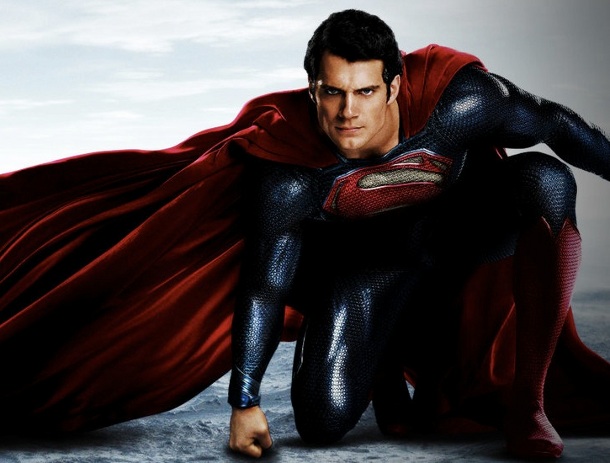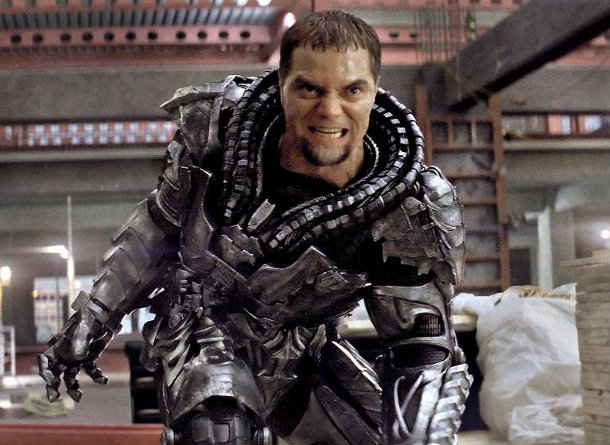Man Of Steel Producer Talks Lois Lane, Costume Choices, Alpha Male Rivalry And More...
"Someone said to me it’s the greatest adoption story in all of history..."
With Man Of Steel a mere three weeks from release, SFX talks exclusively to Deborah Snyder, producer of this summer's high-stakes reboot of the Superman legend.

With a summer blockbuster everyone focuses on the visuals and the spectacle, but what’s the heart of this story, emotionally?
Someone said to me it’s the greatest adoption story in all of history. I think that’s an interesting way of looking at it - maybe because I was just in the process personally of adopting my two children. The people of Earth adopt him and he adopts us, as well. A lot of the messaging in this film is about family, and who makes you who you are. Clark is on this journey of self discovery, trying to figure out who he is and where he fits in, and in the end he comes to see what Jor-El, his Kryptonian father, has sacrificed and given for him. And he also realises how his Earth parents made him who he is. All those themes and notions follow him throughout the whole film. That’s something that resonated with me, even from when we started reading the script and started talking about doing this film.
What about the Lois and Clark relationship? How does that relate to previous incarnations of Superman we’ve seen?
I think that our Lois is a little feistier and stronger. I think both characters are more realistic to us, to society now. Clark to me was always too good to really relate to. He was a little too much this perfect boy scout, and although Lois was feisty and strong she was still always the one being rescued. Not to say that she doesn’t get rescued in our movie, but she rescues him right back, in so many other ways, emotionally. And in our film, in our last setpiece, she has a very strong position. There’s something that she needs to accomplish in this plan in order for it to work. I like seeing that she’s a really strong female character, and very proactive.
So she isn’t just falling off skyscrapers?
No! (laughs) And her apartment is a little more realistic to her job, I think. With the Richard Donner films I was always like “Wow, that apartment – how could she afford that? It’s amazing!”
Sign up to the SFX Newsletter
Get sneak previews, exclusive competitions and details of special events each month!
What were you looking for in the person that would bring your Lois to the screen?
Amy [Adams] is an amazing actor. With all the casting we tried to get the best actors we could, because it just gives it credibility. In so many ways we didn’t look at it as a genre superhero movie - we looked at it as a great story that we were telling, and we wanted to get the best people. Amy embodied so much of Lois – she’s feisty herself and she’s so versatile, and she was really just perfect for the role.

And what does Michael Shannon bring to Zod? He’s clearly going to be compared to Terence Stamp, who was such an iconic take on that villain…
Michael Shannon is again such a respected actor. He had never done something of this physicality before, so it was challenging for him. All his armour is CG, so he embodied this role by looking at the pictures of what he was going to look like, and how he would move in his armour when he was in a mo-cap suit. You need someone who’s super-seasoned as an actor to pull that off, and he really does. It’s funny, because he’s the nicest guy, but sometimes on set he would be super-serious. He’d be in character and I’d be like “Oh my goodness, he is super-scary!” And then all of a sudden he would finish the scene, he’d break a joke and you’d be like “Oh, that’s Michael, he’s funny…” I forgot that because he’s kind of terrifying too! He just has this intensity that he brings to the role.
And a physicality that has to match what Henry brings to Superman…
He’s a giant, but we really put him through the motions. The training for the role was so much a part of the process of making the film. The guys carried themselves differently as they went through their process of transforming their bodies. It was a really important part of the preparation. You saw Michael’s posture change. As we went along in prep he kept becoming more and more Zod-like, and I’d say the same thing about Henry too. It’s like they would carry themselves differently. It wasn’t that they were wearing a padded suit, they actually filled the suit, but it did something to their performance at the same time, and I think helped them get in the head of their character.
Was there any alpha male competition going on between the two guys?
[laughs] Maybe in the gym. Mark Twight, who trained them, usually pitted them against each other and would post their scores on the board. They'd do the workout and the timings or the weight would be up there for everyone to see. It keeps everyone kinda honest, I think, but also competitive.
Sounds like some serious psychology there…
Yeah!
Was that part of Zack’s plan, to get performances out of them?
I think in a way it was. Over our films we’ve learned a lot about how training really affects the actors and the performances, and I think the mental preparedness they get from the training is really transferable to their role. So I think it does affect it and there is a plan there.
The costume is obviously a crucial part of the Superman iconography. How did you go about bringing it to the screen?
It’s a daunting process, because you want to be true, and we’re very respectful of the canon. But you also have to look at what’s happening on the screen right now with superhero costumes. It has to be relatable to a modern audience. But at the same time you don’t want to say “Who is that? That kinda looks like Superman…” It has to read, at first blush, as Superman. We went through so many iterations of the costume and yes, Zack did try very hard to make the underpants on the outside of the costume work - there are nods to it, with the belt and with some of the side detail on the costume, and that just felt more appropriate to the movie we were making. The other thing that was important for Zack was that the costume not come out of nowhere. It had to have a reason. We were building a world. We go to Krypton and we see this world, and we see that everything has its place. If they’re in space he wanted it to feel like a space suit, and he wanted it to feel like the underlayer that they would maybe put armour over. It’s also a caped society, so when you go to Krypton he wanted to see variations of this costume. And knowing that it was a caped society he wanted that to be evident when we were on Krypton, so when Clark finally finds the costume and puts it on you’ve established where it’s come from.
Were there any comic book touchstones that inspired you, visually or storywise?
It wasn’t one thing in particular – it was more the whole canon of who he is. David Goyer was always our great fact-checker. As we were going along this process of design and development, if there was something we weren’t sure about we’d always call David and he would usually know the answer. And if he didn't then DC would. But it wasn’t any one particular thing or comic that influenced the film, it was more just generally respecting the canon.
Is it daunting knowing there’s this huge fanbase who know every detail of Superman and who’ll be judging this movie as the latest take on the character they love so much?
Listen, yes, it is daunting. And given our prior work with 300 and Watchmen we’ve kind of taken on these daunting projects! But I don’t think you can look at it that way, because if you do you get paralysed. You have to do your best to respect the canon but also you have to service the story that you’re doing. And you just have to keep focus, because if you start thinking about all these things you lose sight of what’s really important, which is the story, and telling it as best you can, as creatively as you can. So that’s what we focused on.
Nick Setchfield
Man Of Steel is released 14 June by Warner Bros

Nick Setchfield is the Editor-at-Large for SFX Magazine, writing features, reviews, interviews, and more for the monthly issues. However, he is also a freelance journalist and author with Titan Books. His original novels are called The War in the Dark, and The Spider Dance. He's also written a book on James Bond called Mission Statements.


